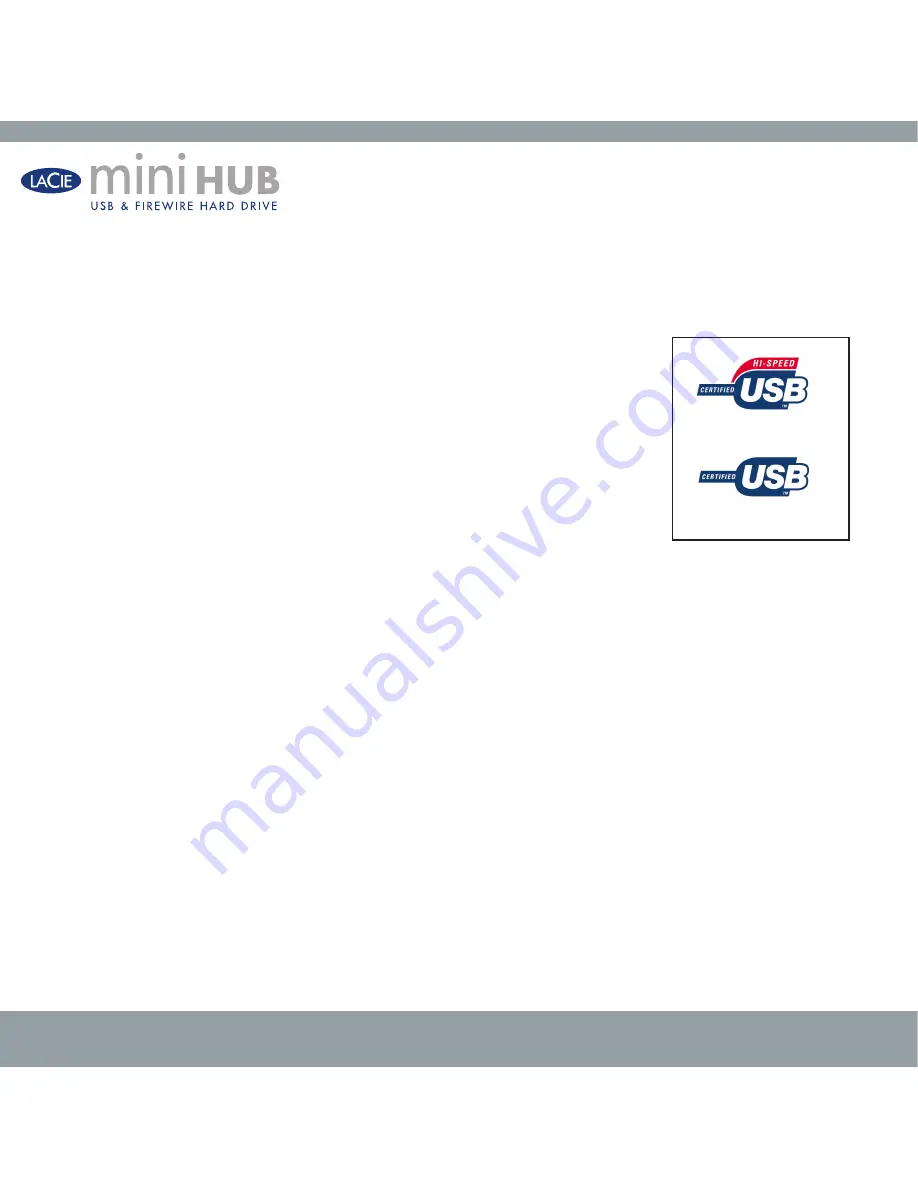
user manual | page
Helpful Information
4.2. Advice For Optimizing USB 2.0 Connections
The following technical information relates to your LaCie Drive and gives some practical advice:
4.2.1 What is USB 2.0?
The new USB 2.0 standard provides higher bandwidth for high-speed peripherals such as
external hard drives, high-speed scanners and CD-RW drives. USB 2.0 delivers transfer
rates up to 480Mb/s, while conveniently maintaining backward compatibility with USB
1.1 devices.
USB 2.0 can still be used to connect lower-speed USB 1.1 ports and devices like digital
cameras, scanners, modems, keyboards, mice, joysticks and printers. In the USB 2.0 sys-
tem, existing USB peripherals do not have to be upgraded, and lower-speed devices will
not require additional performance, instead operating as USB 1.1 devices.
USB Cables and Connectors
Your LaCie drive is shipped with a USB 2.0-certified USB cable, to ensure maximum data
transfer performance when connected to a USB 2.0 port. The cable will also work when connected to a USB 1.1 port, but
drive performance will be limited to USB 1.1 transfer rates.
There are also different types of USB connections, such as the mini-cable and device end. Make sure that you have the cor-
rect type of connection on computer. Consult LaCie Customer Support or your LaCie reseller for more information.
USB 2.0 Host Bus Adapters and Performance
To utilize the newly-enhanced USB 2.0 performances, your computer must be equipped with a USB 2.0 host bus adapter
card (sold separately, such as the LaCie USB 2.0 PCI Card, or integrated by your PC manufacturer) and the appropriate
drivers. These host bus adapter cards, which include one or more USB ports, are shipped with special USB 2.0 drivers that
enable the computer to control the card. These drivers must be installed in order for USB 2.0 devices connected to the port to
work at their correct speeds. For installation instructions, please refer to the documentation that comes with the host adapter
card.
LaCie supplies only the appropriate USB 2.0 drivers for its peripherals and does not provide drivers for third-party host
adapter cards. To obtain the right drivers for your host adapter card, visit your card manufacturer’s Internet site.
USB .0 logo
USB .0 logo
Fig. .













































